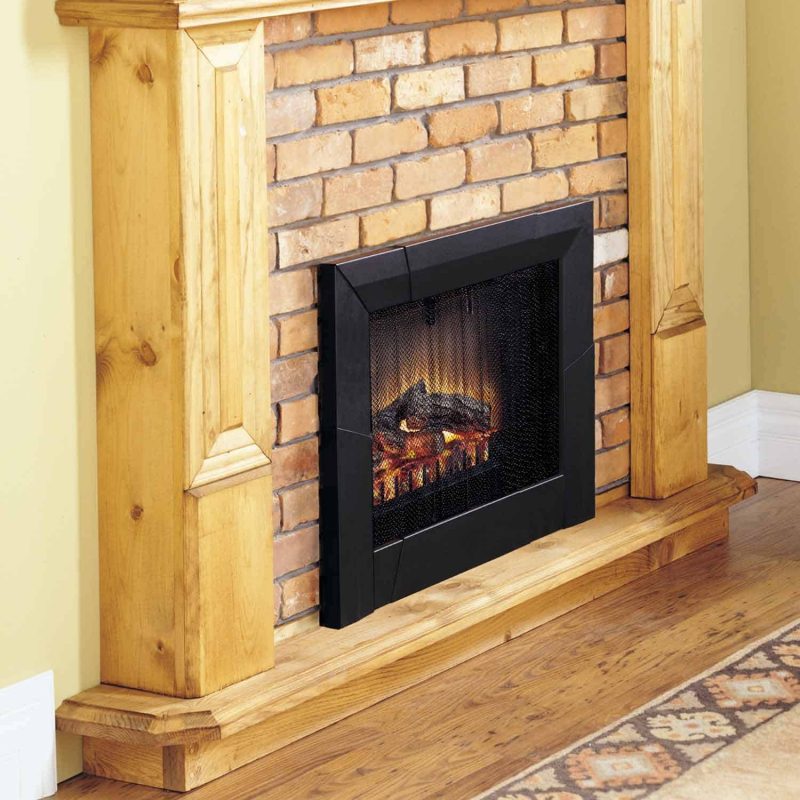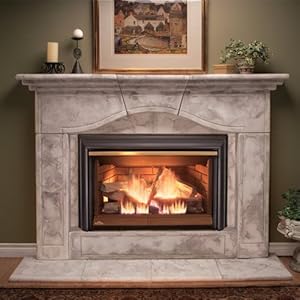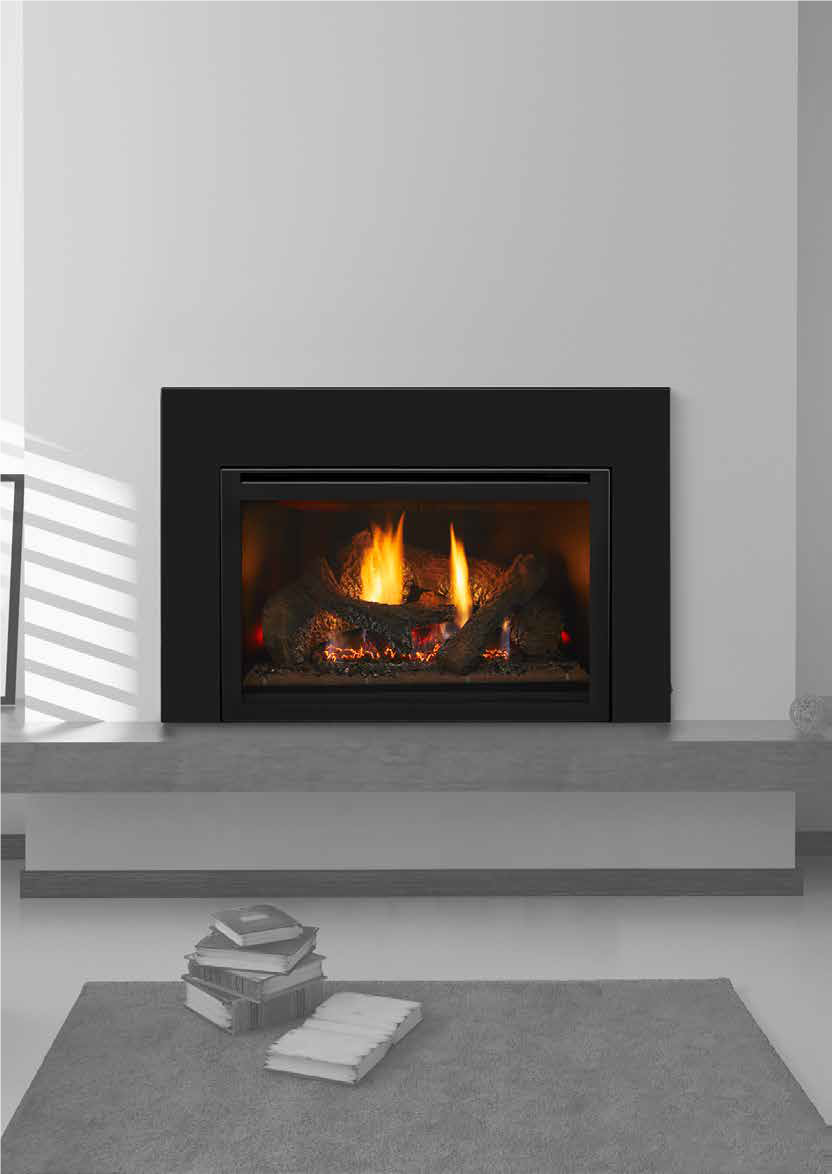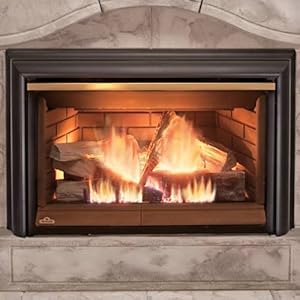Fireplace Insert Trim
Fireplace insert trim can make a massive difference in the overall look and functionality of your fireplace. While a fireplace insert adds efficiency and enhances heat output, the trim around it is what makes everything look polished and complete. It’s one of those final touches that can completely change the aesthetic of a room, making the fireplace feel like a cohesive part of the space. Today I will walk you through everything you need to know about fireplace insert trim, from the types available to installation and maintenance tips, helping you make the perfect choice for your home.

Understanding Fireplace Insert Trim: What It Is and Why It Matters
Fireplace insert trim is more than just a decorative element; it serves an important functional role as well. Essentially, it’s the material or molding that frames the fireplace insert, covering gaps and creating a seamless look between the insert and the fireplace wall. Without trim, an insert can look unfinished, with visible gaps or rough edges that take away from its charm.
The right fireplace insert trim can help in various ways. For one, it conceals the space between the insert and the surrounding masonry, ensuring a clean and polished look. It also helps with heat management by keeping the insert in place, preventing heat from escaping around the edges. In my experience, this kind of trim can completely change how the fireplace looks and feels, making it look more like a permanent, built-in feature rather than an add-on.
What’s great about trim is that it comes in a wide range of materials and finishes, from sleek metals to rustic wood or stone. This variety allows you to match the trim to your room’s decor and personal style, making your fireplace truly unique.

Types of Fireplace Insert Trim
When choosing trim, there are several types available, each bringing its aesthetic and benefits. I like to start by considering the overall style of the room. Is it modern, traditional, rustic, or something in between? The right trim should complement this style while also enhancing the appearance of the fireplace insert itself. Here are some popular options to consider:
Metal Trim is a popular choice for modern or industrial-style spaces. It’s usually made of stainless steel, brushed nickel, or black iron and adds a sleek, contemporary look to the fireplace. This type of trim can provide a clean, streamlined appearance and often works well in minimalist interiors. I’ve noticed that metal trim also has a practical edge since it’s highly durable and easy to clean.
Wood Trim offers a classic, warm aesthetic that works well in traditional and rustic settings. It can be stained or painted to match your decor, making it a flexible choice. If you’re aiming for a cozy, inviting vibe, wood trim can give your fireplace the look and feel of a natural, built-in hearth.
Stone Trim is ideal if you want a more natural, rugged look. Made from materials like marble, slate, or limestone, stone trim can lend an earthy quality to the fireplace. I often recommend this option for homeowners looking to create a fireplace with a rustic or luxurious touch. Stone trim does tend to be more expensive and requires a bit more maintenance, but the visual impact it delivers can be worth the investment.
Tile Trim can add an artistic flair to your fireplace. It’s highly customizable and comes in an endless array of colors, patterns, and finishes, from glossy ceramics to matte porcelain. Tile trim works well in both modern and traditional spaces and gives you the freedom to make a bold statement or a subtle enhancement, depending on your color and pattern choices.

Tips for Finding Your Perfect Fit
Selecting the perfect trim for your fireplace insert involves more than just picking a material. It’s about considering the room’s overall aesthetic, the size and shape of the fireplace, and how you want the trim to complement or contrast with the rest of the decor.
First, I recommend assessing your existing decor. The trim should work harmoniously with other design elements in the room. For example, if you have a lot of metal accents, such as in a contemporary living room, metal trim can help tie everything together. On the other hand, if your decor leans more toward a natural, earthy vibe, wood or stone trim might be the perfect fit.
Next, think about scale. For larger fireplaces, a thicker trim can provide a strong visual anchor, while a slimmer trim might be better suited for smaller fireplaces to avoid overwhelming the space. If you’re looking for something subtle, choose a trim color that’s similar to the wall or fireplace insert. If you want to make a statement, go with a contrasting color or material.
Finally, consider the color and finish of the trim. This decision can drastically affect the room’s mood. A brushed metal or matte black trim gives a modern, sophisticated look, while a high-polish metal or richly stained wood can create a more luxurious feel.

Installing Fireplace Insert Trim: A Step-by-Step Guide
Installing fireplace insert trim might sound challenging, but with the right approach, it can be a manageable project, even for those who are moderately handy. If you’re not comfortable with DIY projects, you might want to hire a professional to ensure a perfect fit. However, if you’re up for the task, here’s a general step-by-step guide to help you install fireplace insert trim yourself.
Step 1: Gather Your Materials – Make sure you have all the necessary tools and materials before starting. Depending on the type of trim, you may need a saw, drill, adhesive, screws, measuring tape, and a level.
Step 2: Measure Your Insert – Take accurate measurements of the fireplace insert and the surrounding area where the trim will be installed. This is crucial for cutting the trim to the right size.
Step 3: Cut the Trim – Use a saw to cut the trim to fit around the insert. Be careful to measure twice and cut once, as precision is essential for a seamless look.
Step 4: Attach the Trim – Depending on the type of trim, you may use screws, adhesive, or a combination of both to attach it to the wall around the fireplace insert. Make sure the trim is level as you go, using a level to avoid any crooked edges.
Step 5: Seal the Edges – For some trims, especially metal and wood, you may want to seal the edges with a heat-resistant sealant to ensure durability and a clean finish.
Installing fireplace insert trim requires patience and attention to detail, but the results can be incredibly rewarding. A well-installed trim can give your fireplace a polished, professional appearance that enhances the entire room.

Tips for Longevity and Appearance
Once your trim is installed, you’ll want to keep it looking its best. Different materials require different care, so I recommend tailoring your maintenance routine to the specific type of trim you’ve chosen.
Metal Trim – For metal trims, regular dusting and occasional polishing with a gentle cleaner are usually all that’s needed. Avoid abrasive cleaners, which can scratch or dull the finish, especially on polished metals. A soft, damp cloth works well for wiping down the trim without causing damage.
Wood Trim – Wood trim requires a bit more care, especially if it’s stained or painted. Dust it regularly, and avoid harsh cleaners. Instead, use a wood-safe cleaner or polish. If the wood shows signs of wear, you may need to refinish it every few years to maintain its look.
Stone Trim – Stone trim is generally durable but can be porous. It’s best to seal the stone periodically to prevent stains and make cleaning easier. Dust and wipe down stone trim with a gentle, pH-neutral cleaner, and avoid acidic cleaners that could damage the stone.
Tile Trim – Tile is one of the easiest materials to maintain. Regular dusting and cleaning with a mild cleaner will keep it looking fresh. If the grout becomes stained or worn, consider re-grouting to maintain a clean appearance.
By staying on top of maintenance, you can extend the life of your trim and keep it looking as good as the day you installed it.

Design Tips for a Cohesive Look
The trim around your fireplace insert is an important design element, and with the right styling, it can enhance the look and feel of your entire space. I find that one of the best ways to create a cohesive look is to repeat elements of the trim in other parts of the room. For example, if you choose a metal trim, consider incorporating metal accents in other decor items like lamps, picture frames, or even side tables.
If your trim is wood, try bringing in other wood accents, such as a reclaimed wood coffee table or a few wooden decor pieces on the mantel. For stone trim, adding natural materials like a slate or granite tabletop can help tie everything together.
When arranging furniture, make sure the fireplace area is visible and accessible. Position seating around the fireplace in a way that highlights it as the focal point of the room. Adding a cozy rug or a couple of comfy chairs near the fireplace can turn it into a welcoming gathering spot.
Finally, don’t forget the lighting. The right lighting can bring out the textures and finishes of your trim. For example, uplighting can highlight the metallic sheen of metal trim, while soft, warm lighting can enhance the coziness of wood trim.

Fireplace Trim Kit – YouTube

Regency i1150 Small Wood Burning Insert – Rocky Mountain Stove & Fireplace

Valor G4 785JLN Gas Fireplace Insert with 5″ Bronze Trim Surround. Gas fireplace insert

Gas Fireplace Insert Trim Kit – Fireplace Guide by Linda

26 in. Contemporary Electric Fireplace Insert with Flush-Mount Trim Kit

Inspiration Direct Vent Fireplace Insert Trim Kit: 3 Sided Aluminum Extrusion

Related Posts:
- Lopi Wood Burning Fireplace Inserts Reviews
- Rustic Fireplace Insert Ideas
- Wood Burning Fireplace Insert Replacement
- Empire Natural Gas Fireplace Inserts
- Decorative Fireplace Inserts
- Avalon Gas Fireplace Inserts Reviews
- Gas Fireplace Inserts Cape Cod
- Electric Fireplace Insert Stone
- Arched Gas Fireplace Insert
- Fireplace Insert Flue
Fireplace insert trim refers to the decorative frame that surrounds the opening of a fireplace insert. It plays an important role in enhancing the appearance of your fireplace and can complement the overall design of your living space. There are various types of fireplace insert trim available, ranging from traditional to contemporary styles, and they can be made from materials such as metal, wood, or stone. In this guide, we will discuss the benefits, pros and cons of fireplace insert trim, common mistakes to avoid, and answer some frequently asked questions related to this topic.
Benefits of Fireplace Insert Trim
Aesthetic Appeal: One of the main benefits of fireplace insert trim is its ability to enhance the aesthetic appeal of your fireplace. The trim can add a decorative touch to the opening of the fireplace and create a focal point in the room. Whether you prefer a classic or modern look, there are trim options available to suit your style.
Customization: Fireplace insert trim allows for customization based on your preferences and existing decor. You can choose from a variety of styles, finishes, and materials to create a unique look that complements your home’s interior design. Whether you want a sleek metallic trim or a rustic wooden frame, there are endless possibilities for customization.
Protection: In addition to its decorative function, fireplace insert trim can also provide protection for the edges of the fireplace opening. It can help prevent damage and wear over time, ensuring that your fireplace remains in good condition for years to come.
Increase Resale Value: Adding a fireplace insert trim can increase the resale value of your home by enhancing its visual appeal. A well-designed and stylish trim can make your fireplace stand out and attract potential buyers who appreciate attention to detail in home decor.
Pros and Cons of Fireplace Insert Trim
Pros:
1. Enhances Decor: Fireplace insert trim can enhance the decor of your living space, adding style and sophistication to the room.
2. Customizable: Trim options are highly customizable, allowing you to choose a design that fits your taste and complements your existing decor.
3. Protection: Trim helps protect the edges of the fireplace opening from damage and wear over time, increasing the longevity of your fireplace.
4. Increases Resale Value: Investing in quality fireplace insert trim can increase the resale value of your home by making it more attractive to potential buyers.
Cons:
1. Cost: Depending on the material and design you choose, fireplace insert trim can be expensive to purchase and install.
2. Maintenance: Some types of trim may require regular maintenance to keep them looking their best, such as cleaning or refinishing.
3. Limited Options: Depending on where you purchase your trim from, there may be limited options available in terms of style or design.
4. Compatibility: Ensuring that the trim is compatible with your existing fireplace insert may require additional research or professional assistance.
Common Mistakes to Avoid
1. Ignoring Safety Precautions: When installing fireplace insert trim, it’s important to follow safety precautions to prevent fire hazards or damage to your home.
2. Choosing Incompatible Trim: Make sure that the trim you choose is compatible with your existing fireplace insert to avoid issues with installation or functionality.
3. Neglecting Maintenance: Regular maintenance is key to preserving the appearance and condition of your fireplace insert trim.
4. Overlooking Design Considerations: Take into account factors such as size, style, and material when selecting fireplace insert trim for a cohesive look in your living space.
What materials are commonly used for fireplace insert trim?
Common materials used for fireplace insert trim include metal (such as stainless steel or brass), wood (such as oak or mahogany), and stone (such as marble or granite).
Can I install fireplace insert trim myself?
While some homeowners may have experience with DIY projects, it’s recommended to consult a professional for the proper installation of fireplace insert trim to ensure safety and functionality.
How do I clean and maintain my fireplace insert trim?
The cleaning and maintenance requirements may vary depending on the material of your trim. Consult with the manufacturer’s guidelines for specific care instructions.
Can I customize my fireplace insert trim?
Yes, many manufacturers offer customizable options for fireplace insert trim, allowing you to select features such as size, finish, and design according to your preferences.
Will adding a fireplace insert trim affect the efficiency of my fireplace?
In most cases, adding trim should not significantly impact the efficiency of your fireplace as long as it is properly installed without obstructing airflow or ventilation paths.
Fireplace insert trim not only enhances the aesthetic appeal of your living space but also provides protection for your fireplace opening while increasing its resale value. With various customization options available, you can choose a design that complements your existing decor and reflects your style. By avoiding common mistakes such as neglecting maintenance or choosing incompatible trim, you can ensure that your fireplace looks its best for years to come. If you have any further questions about fireplace insert Trim, consult with a professional or the manufacturer for guidance and recommendations.
Overall, fireplace insert trim can be a valuable addition to your home that offers both aesthetic and practical benefits. By considering factors such as material, design, and maintenance, you can select the perfect trim for your fireplace and create a stylish focal point in your living space. Whether you prefer a classic metal trim or a rustic wooden frame, there are options available to suit your taste and enhance the overall look of your home. If you have any further questions about fireplace insert trim, do not hesitate to reach out to a professional or manufacturer for assistance.